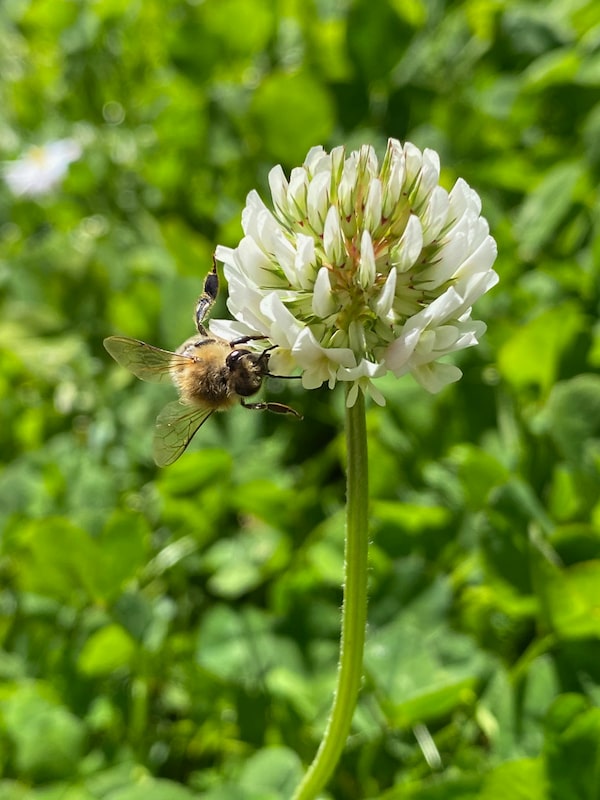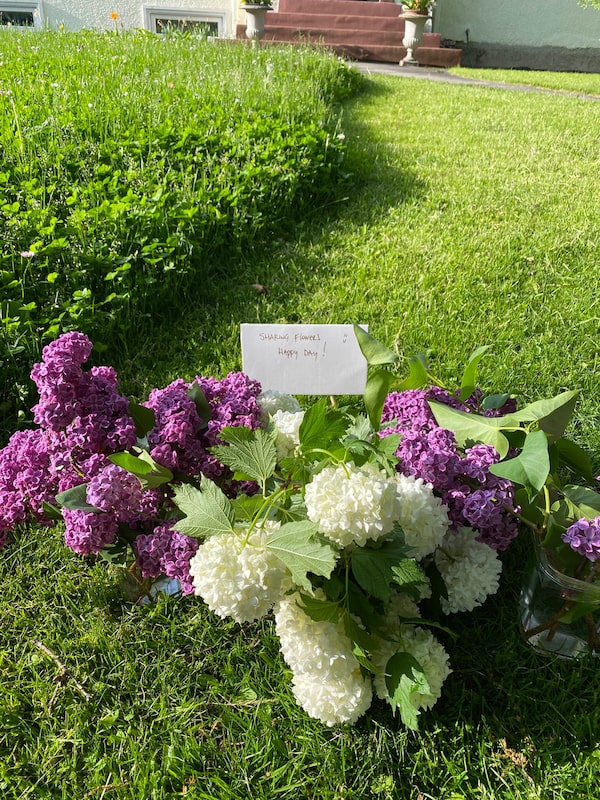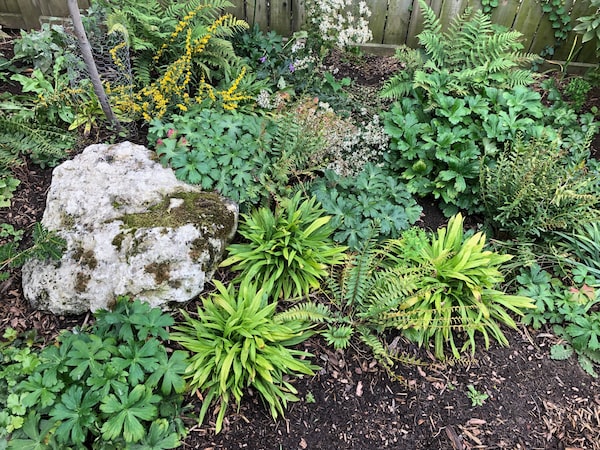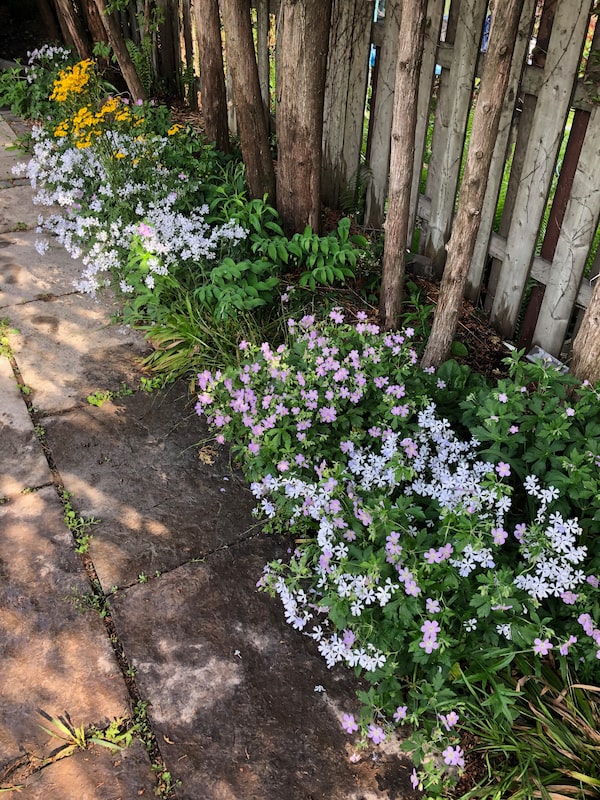A diverse meadow of native Garry Oak ecosystem wildflowers by Saanich Native Plants.Kristen Miskelly/Handout
For Stephane Laroye, the journey started 10 years ago with bees – specifically, mason bees and an accompanying bee “hotel” being given to residents in an effort to reintroduce the species to Vancouver. As he learned how to tend to the insects, he watched their numbers grow year by year, along with the productivity of the fruit trees in his and neighbouring Kitsilano backyards. There were so many bees, he was giving them away. “We created a very small, kind of geeky community of mason bee enthusiasts,” he says.
But then four or five years into life as a bee landlord, Laroye started to notice a “huge reduction” in numbers: from 30 or 35 in a year to 10, then three, then zero. “It was a crash,” he says. “It shook me up a bit, and made me realize we needed to do a lot more for the bees to survive.”
Adding a few pollinator-friendly plants helped a little, he says. But he wanted to do more. So last March, spurred on by losing large patches of his front lawn to chafer beetles, Laroye removed most of the grass and replaced it with a low-maintenance “bee turf” seed mix – a blend of clover and other flowers such as chamomile, alyssum and daisy – from local company West Coast Seeds. First came “a bit of green fuzz,” and then after about six weeks, the flowers started to make an appearance – along with a whole variety of bees. “The reward has been just enormous,” he says.


Stephane Laroye's pollinator-friendly plants.Stephane Laroye/Handout
Mason bees are far from the only species struggling to survive these days. But the good news is, Laroye is just one of many people around the world working to increase the biodiverse habitat these insects, birds and other creatures (as well as the plants they are interdependent with) require. It’s a movement that’s increasingly being called rewilding, and many – none other than David Attenborough among them – believe it’s an essential part of mitigating the climate crisis and keeping our planet livable. If 2020 was the year of vegetable gardening, perhaps 2021 can be a time to shift our focus to the broader ecosystem – not just for the sake of our wilder neighbours, but for our human communities, too.
One leader in this movement has been American ecologist Douglas W. Tallamy, whose book Nature’s Best Hope urges readers to set aside half their properties for native plants, a concept he calls Homegrown National Park. It’s an idea that has captured many imaginations, and for good reason, says Carly Ziter, a professor of biology at Concordia University who specializes in the ecology of urban environments. “It might feel uncomfortable at first to do these things because we’re used to a certain aesthetic,” she says. “But often when people start seeing the bees and butterflies and birds come back, it’s really gratifying and they want to do more.”
Ziter points out that many of us see nature as separate from the places where we live, and that the 80 per cent of Canadians who live in urban environments will (assuming they have the privilege to do so) often leave the city to seek nature. But nature has been there all along, she says, and we would do well to value it more highly. Urban green spaces provide us with improved mental and physical health, higher property values, reduced flooding and, when it comes to trees in particular, lower summertime temperatures – which is especially important to protect vulnerable populations (who often live without air conditioning) from the effects of heat waves.
“Nature, or green infrastructure, is something that we’ve often thought of as nice to have,” Ziter says. “But it’s actually really critical.”

Paul O’Hara's small backyard garden project in east Hamilton, Ont.Paul O’Hara/Handout
For Paul O’Hara of Hamilton, the goal is to connect wild spaces “one garden at a time.” Through his business Blue Oak Native Landscapes, he helps clients turn their properties into functioning native ecosystems, whether they’re organized landscapes with plenty of curb appeal or private spaces allowed to get a little unruly. A botanist by training, he’s motivated by the potential of turning more of our European-style gardens into truly Canadian ecosystems.
“It would be incredible what our neighbourhoods could look like,” he says. “The bird diversity, the insect diversity, and getting kids and adults connected back to nature, maybe slowing down and realizing life isn’t all about just working and rushing from here to there.”
So where do you start? Begin by defining your vision, suggests Kristen Miskelly of Saanich Native Plants, a nursery and consultancy near Victoria. Perhaps you want to attract hummingbirds or other pollinators, or plant a miniature woodland, or create a wildflower meadow. Next, cross-reference that with the native species of your bioregion and any other requirements, such as preventing slope erosion or blocking certain sightlines. Then it’s a matter of working with a local nursery or landscaper to choose the right plants. “What we’re trying to do for people is provide a list of species and restoration approaches that will be successful,” Miskelly says, “so they’ll be able to put those plants in and those plants will do well.”

Mr. O’Hara's walkway in his woodland gardens.Paul O’Hara/Handout
Canada is big and diverse, and the plants best suited to the birds and butterflies of Victoria are probably not the same as those most needed in Halifax, or the points in-between. That said, O’Hara is a huge fan of oak trees – “they’re the best pollinator plants in our flora” – and of asters and goldenrods, native flowers that bloom in the late summer and fall, providing an essential food source to bees preparing for winter. Miskelly puts a lot of time into helping people convert lawns into meadows, which “are of major conservation concern” due to development. “Meadows can be overlooked and undervalued,” she says.
As for how to plant, O’Hara emphasizes that working with native species doesn’t mean abandoning well-designed gardens; he works with the same principles as any landscaper. The aim, he says, is to create a space with broad appeal. “It’s about building something that’s pleasing, but can feed wildlife as well.”
Miskelly points out that the highly developed, ecologically devastated world we live in now is not the one that existed when many garden trends began. “I can imagine a time where there was so much nature that people felt compelled to alter their environment so they felt safer and things felt cleaner, but we’ve gone too far in the other direction, to the point where it doesn’t even make humans happy anymore,” she says. “It’s time for a change.”
Sign up for The Globe’s arts and lifestyle newsletters for more news, columns and advice in your inbox.